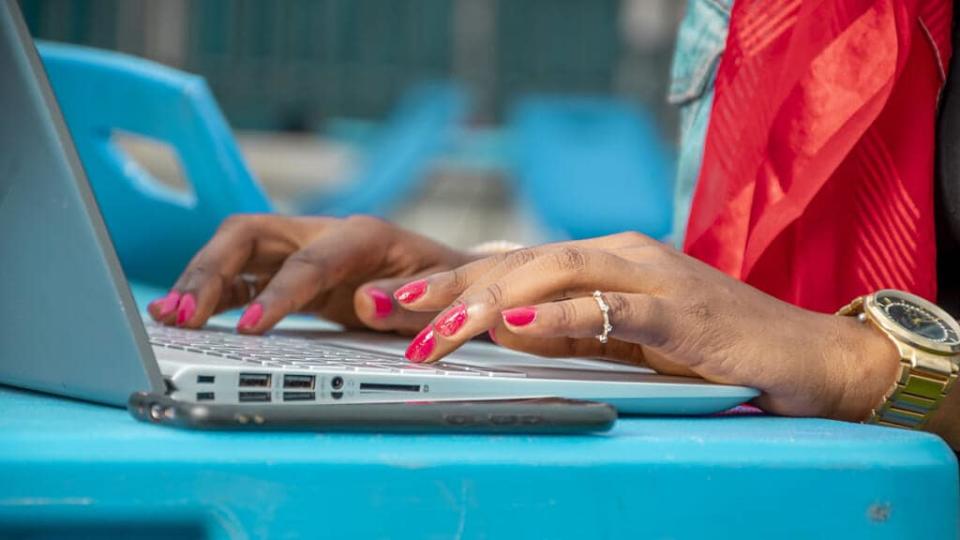Black and Latino homes in California are slightly behind in high-speed internet access, survey reveals
Households with an annual income below $50,000 and homes headed by adults over 65 are greatly impacted by the digital divide.
Though slight, Black and Latino households in California continue to have unequal access to high-speed internet.
According to 2020 data from the U.S. Census Bureau’s American Community Survey, 87% of white households had high-speed internet access. That is compared with 83% of Black households and 80% of Latino households, per the Los Angeles Times. The Public Policy Institute of California recently presented the “experimental data,” and noted in its report that the findings were limited by “substantial nonresponse bias” because of the COVID-19 pandemic.

“We present these ACS findings cautiously, and we do not make direct comparisons with prior years,” the institute wrote about the latest available American Community Survey data on broadband access in the state.
The data shows that “15% of both Black and Latino households, and 23% of low-income households” have no computing device at home, according to the Times. Additionally, households with an annual income below $50,000 and homes headed by those 65 and older are more impacted by the digital divide. The data show that these households in particular lag behind younger and college-educated households, which tend to have multiple computing devices (such as laptops, smartphones and tablets) and high-speed internet access.
“Notably, 5% of households with school-age children did not have home access to a device,” the institute wrote, according to the Times.
As reported previously by theGrio, for many low-income communities, digital inequality is directly linked to social inequality.
The Los Angeles Unified School District has about 450,000 students of which 20% — or 90,000 children — lack sufficient access to broadband internet to meet academic requirements, according to the report. This has prompted school officials to spend big bucks in efforts to improve digital connectivity for students beyond school grounds, as noted by theGrio.
The Los Angeles Unified School District committed $50 million to counter the digital divide, the Los Angeles Times reported.
“Connectivity and universal, ubiquitous access to digital content anytime anywhere, whether in school, in the community, in the park or the public library, is a civil right that must be delivered to our generation,” Superintendent Alberto Carvalho is quoted as saying by the Times.
In a May tweet announcing the move, Carvalho pledged to “eliminate the digital desert” with the help of AT&T and Spectrum, two of the largest internet providers in Los Angeles.
“Every [Los Angeles school district] student and every [Los Angeles school district] family, regardless of socioeconomic condition or zip code of residence, will have access to high-speed internet at home,” he said.
Yet, some say the the issue of the so-called digital divide goes deeper than just internet access. “When we hear the term ‘digital divide,’ we might think of a divide in access to technology between ‘haves’ and ‘have-nots,’” said Jim Brown, an associate professor of English and director of the Digital Studies Center at Rutgers University–Camden. “For a long time, we have tried to address this issue by getting computers into classrooms, but this isn’t the best way to think about this problem; access to tools looks very different for different individuals.”
Meanwhile, the Public Policy Institute noted that federal programs that discount or subsidize broadband access “have helped increase digital access,” in the country.
Hernán Galperin, an associate professor at the University of Southern California Annenberg School for Communication and Journalism, believes this is a big step in the right direction, certainly for California. “The pandemic has renewed attention to the digital divide,” she said last month in an article reported by theGrio. “We have a unique window of opportunity to reach the goal of full broadband adoption.”
Overall, 91% of households in California have high-speed internet access, according to a March 2021 report by the University of Southern California, theGrio has reported.
TheGrio is FREE on your TV via Apple TV, Amazon Fire, Roku, and Android TV. Please download theGrio mobile apps today!
The post Black and Latino homes in California are slightly behind in high-speed internet access, survey reveals appeared first on TheGrio.

